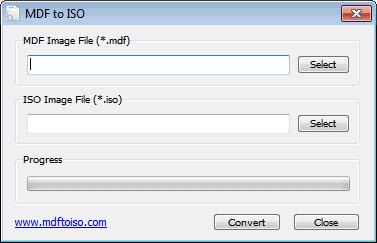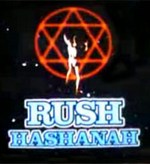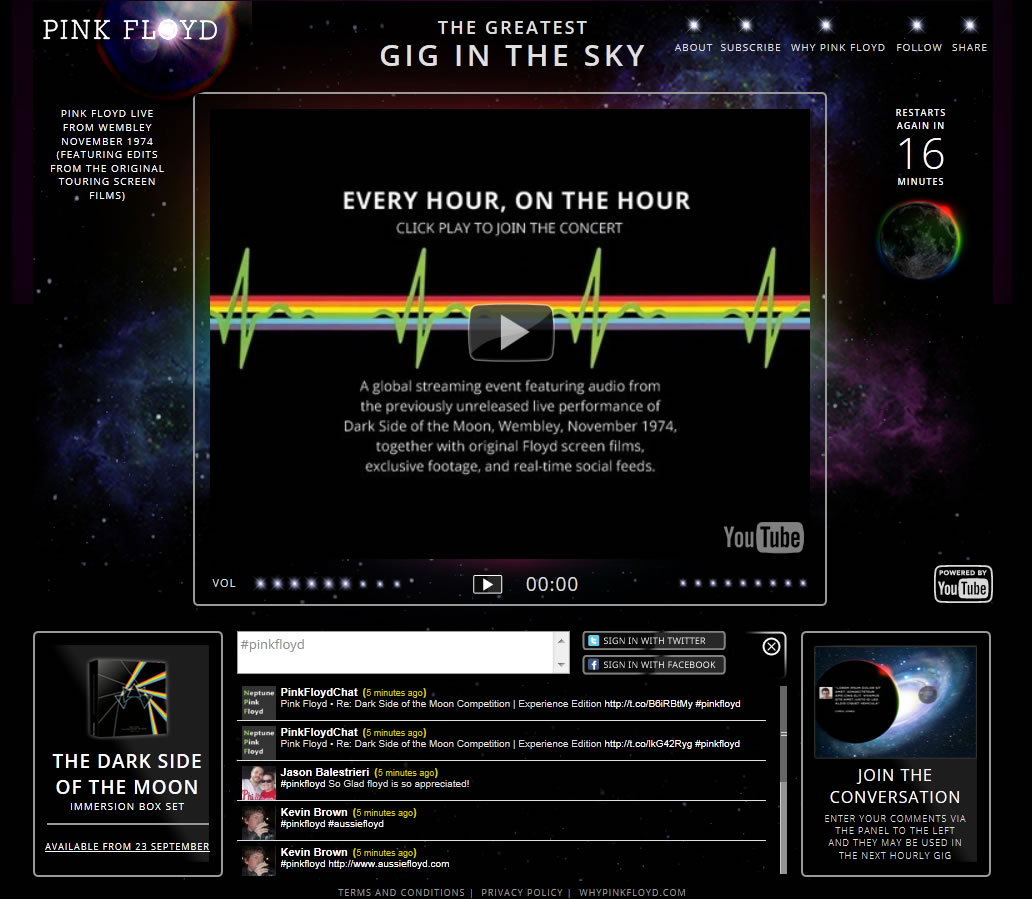    Photos from Darius twin. Peek at more of these creatures in his set, light fossils. |
View article...
| The MDF disk image format (MDF stands for Mirror Disk File) is not as widely used as the ISO format. This in turn means that the file format is not supported as widely in disk burning or mounting applications when compared to the ISO format. MDF files are created with the commercial Alcohol software which can not only created .mdf files but also burn them to disc or mount them on the system. There are other programs that can do that, including OSFMount or Gizmo Drive Mounting. Regardless of programs being available, you may have no compatible software installed on your system to burn or mount .mdf files. If that is the case you can either install a software supporting the disc image format or convert the mdf image to ISO to circumvent the issue. The second solution may be more appropriate if you don’t have to work with mdf files on a regular basis. The free software MDF to ISO looks very similar to the previously reviewed Img to iso application that I have reviewed less than a month ago. Both the application’s design and the program homepage look very similar.  MDF to Iso needs to be installed which is unfortunate as it would make a great addition to a portable tools collection. When you start the program you see a minimalistic interface where you have to select an mdf image file that you want to convert by clicking on the select button. You then pick a local directory where you want the ISO file saved to. A click on Convert start the conversion. A real-time progress bar indicates the conversion progress. The conversion time depends on the mdf file size and the performance of the computer, specifically its processor. The developers have tested the program only under Windows 7. It is however likely that it will work under different versions of Windows as well. Interested users can download MDF to ISO from the project homepage. |
 Visa Europe has launched a new Android app which will allow transfers directly from one card holder to another. Visa Europe has launched a new Android app which will allow transfers directly from one card holder to another.The app was announced by Visa Europe Chief Executive Peter Ayliffe in his keynote speech at the EFMA conference in Paris. Right now the app is available only in English and allows transfers in a single currency for Visa and V PAY cardholders within Europe. Visa promises support for additional operating systems and multiple currencies, as well as payments to and from countries outside Europe in the future. In order to transfer money, the sender will need to use a Visa card issued by a bank which supports the service and register with Visa. Money can then be sent, via the app, to a Visa pre-paid or debit card. The recipient will not have to be registered with the service. Another feature of the new app is access by a Visa card holder to notifications whenever their card is used. In his keynote address, Ayliffe said: The way we pay is changing, driven by the rapid uptake of new technologies and growing consumer demand for more flexible payments. Today's announcement is the first in a series of new products and services that Visa Europe will be launching in the coming months to reflect the fundamental shift in consumer behaviour. We are already seeing early adoption of mobile payments, and in the coming months we will see the arrival of mainstream NFC technologies, advanced loyalty and e-commerce services, and ultimately, the launch of a new digital wallet. Visa has also been working with with Google to get Visa payments added to the recently launched Google Wallet program. Permalink | Comments |
 It's pronounced "twerp," but don't mistake TeamWin's Recovery Project for a run-of-the-mill chump. The software is intended as a touchscreen replacement for ROM managers such as TWRP 1.0 and ClockworkMod Recovery. In addition to the all-important backup, restore and install functions, the utility now provides a full GUI for touch input that's fully customizable with XML themes. As a particular boon, developers will have the option to design custom installation processes unique to their particular ROMs, which is a lovely (though very metaphorical) cherry on top. As you'd expect, the software supports both phones and tabs, and if you're interested to see more, just check the full demo video after the break. According to the developer, the utility still needs some work before it's ready for prime time, but it's rather nice to see the group stay productive as it matures. [Thanks, Ian] Continue reading TeamWin demos TWRP 2.0 recovery manager for Android, scoffs at your volume rocker (video) TeamWin demos TWRP 2.0 recovery manager for Android, scoffs at your volume rocker (video) originally appeared on Engadget on Tue, 27 Sep 2011 22:22:00 EDT. Please see our terms for use of feeds. Permalink |  Android Central | Email this | Comments Android Central | Email this | Comments |
Guitar World magazine recently posted their list of the Top 30 12-String Guitar Songs of All Time and Rush's Closer to the Heart made the cut at #10:Taken from Rush's 1977 album A Farewell to Kings, "Closer to the Heart" begins with a majestic-sounding arpeggio picking pattern played by guitarist Alex Lifeson on a 12-string guitar. This song was also Rush's first hit in the U.K. and has been a staple of their live show ever since. |



 Imagine you have a Windows PC with a single user account, and you just lost your password. Here’s how to enable the hidden Administrator account with nothing more than the install CD and some registry hacking magic so you can reset your password. Normally if you wanted to enable the hidden administrator account from within Windows, you’d need access to an Administrator mode command prompt, but that won’t work if you don’t have access, right? This is a great way to quickly enable the hidden admin account so you can reset the password on your main account. Note: This will require editing the registry which is risky. Proceed only if you know what you are doing and at your own risk.  |
  Tonight we'll get our first glimpse of Rush's upcoming Time Machine 2011: Live in Cleveland concert video when VH1 Classic kicks off their Rush Hashanah celebration. The station will be airing 24 hours of Rush programming beginning tonight at 7PM EST/PST in celebration of the Jewish New Year. The showcase of the celebration will be the premiere of an edited version of the Time Machine concert which will run from 8PM until 10:30PM, which means they'll be showing about 1:45-2 hours of the actual concert after commercial breaks are factored in. It'll be interesting to see what gets edited out. Also on the docket are the Rush Classic Albums special, the Rush documentary Rush: Beyond the Lighted Stage, R30 and Rush in Rio. VH1 Classic first celebrated Rush Hashanah back in 2008 and also in 2010, where they premiered the Rush Classic Albums special. The Time Machine 2011: Live in Cleveland DVD will release on November 8th with the /dp/B005D0RDKW?tag=estengercom-20" target="_blank">Blu-ray version releasing on December 20th. The film will also be getting a theatrical release beginning October 26th. Tonight we'll get our first glimpse of Rush's upcoming Time Machine 2011: Live in Cleveland concert video when VH1 Classic kicks off their Rush Hashanah celebration. The station will be airing 24 hours of Rush programming beginning tonight at 7PM EST/PST in celebration of the Jewish New Year. The showcase of the celebration will be the premiere of an edited version of the Time Machine concert which will run from 8PM until 10:30PM, which means they'll be showing about 1:45-2 hours of the actual concert after commercial breaks are factored in. It'll be interesting to see what gets edited out. Also on the docket are the Rush Classic Albums special, the Rush documentary Rush: Beyond the Lighted Stage, R30 and Rush in Rio. VH1 Classic first celebrated Rush Hashanah back in 2008 and also in 2010, where they premiered the Rush Classic Albums special. The Time Machine 2011: Live in Cleveland DVD will release on November 8th with the /dp/B005D0RDKW?tag=estengercom-20" target="_blank">Blu-ray version releasing on December 20th. The film will also be getting a theatrical release beginning October 26th. |
 Check out the online edition of the Summer 2011 issue of Professional Lighting and Production for the cover feature "A Rush Of Light, Four Decades In The Making", an interview with lighting designer Howard Ungerleider. - Thanks RushFanForever for the headsup! |
By Rolling Stone
September 28, 2011 8:00 AM ET

Rolling Stone Issue #1141
Illustration by Joe Zeff Design/EMI Music
The surviving members of Pink Floyd reunited, more or less, for Rolling Stone's new cover story: With Floyd re-releasing their entire catalog, David Gilmour, Roger Waters and Nick Mason all spoke with senior writer Brian Hiatt for our latest issue, on stands and available through Rolling Stone All Access on September 30th. They discuss the band's fraught history, the making of their 1973 masterpiece Dark Side of the Moon and the delicate current state of their relationship.
After years of tension, Waters and Gilmour have played together on three occasions in the past six years – leading to many to think that relations between them are better than they have been in a long time. "You would think so, yeah," says Gilmour, before pausing for a moment. "You could say that, but when I hesitate, it's almost nonexistent. I played on Roger's Wall show here one night a few months ago, and I haven't heard a word from him since."
Other highlights from the story:
• The classic line-up of Pink Floyd reunited onstage after 24 years at Live 8 in London, but don't expect that to happen again anytime soon. "Roger spent a lot of time afterwards saying how he would roll over gracefully for that one occasion, but it wouldn't happen again," says Gilmour. "Which strengthened my views: I understand how other people want that sort of [reunion] thing to happen, but I'm entirely selfish in thinking that I want to enjoy my declining years exactly the way that I want to do it. And that wouldn't be part of it."
Roger Waters Bringing the Wall Tour to American Baseball Stadiums
• Waters remembers being pushed not to sing on Dark Side. "My memory is David and Rick [Wright] were at great pains to point out how I couldn't sing and how I was tone-deaf," says Waters. "And there's this bollocks that Rick had to tune my bass. And you only have to look at the body of work to realize that this is not the case. Maybe their way of keeping me from being totally overwhelming was to point out that I might have vocal and instrumental inadequacies."
• Gilmour quietly retired the Pink Floyd name at the end of 1994's Division Bell tour. "I was launched into being pretty much the sole leader by Roger leaving," he says. "And I was having to bear that hurdle, that burden, all by myself. It was difficult, it was a learning curve, that first album. But you know Division Bell's got a lot to be said for it. After that the weight of carrying the burden was getting a bit much. And I thought I might sort of retire or look into solo things."
Related
• Roger Waters Bringing the Wall Tour to American Baseball Stadiums
• Nick Mason: I Can't Let Go of Pink Floyd
• Alan Parsons on 'Dark Side': 'Roger Knew Something Great Was in the Making'
• Storm Thorgerson: How I Designed the Cover of 'Dark Side of the Moon'
• Erykah Badu, Billy Corgan and More on Legacy of 'Dark Side of the Moon'
• Behind the Scenes of Pink Floyd's 2011 Reunion
• Inside Pink Floyd: Rolling Stone's 1987 Cover Story
• The Madcap Who Named Pink Floyd: Rolling Stone's 1971 Interview with Syd Barrett
• The Dark Side of Pink Floyd: The Illustrated History of the Band's Last Days and Bittersweet Reunions
• Rolling Stone Readers Pick Their 10 Favorite Pink Floyd Songs
• Photos: Roger Waters Rehearses For the Wall Tour
• The 500 Greatest Albums of All Time: Pink Floyd, 'The Dark Side of the Moon'
The scrolls were written over two thousand years ago and were discovered in the 1950s in desert caves. Five of the 972 scrolls were put online today, including the biblical Book of Isaiah. Using Google technology, users can search for specific passages and translate them into English. All of the scrolls are currently at the Israel Museum in Jerusalem. Both teams are working to have all the scrolls available online. Permalink | Comments |
 Despite the common notion that lots of data is beamed down from satellites the majority of global communications travel through a massive network of high speed cables. Check out this interactive map to see the cables that bind everything together. Despite the common notion that lots of data is beamed down from satellites the majority of global communications travel through a massive network of high speed cables. Check out this interactive map to see the cables that bind everything together.Not only does the map showcase the vast network of cables around the globe but you can also zoom in to click on specific nodes. Each node has a listing for the cables that terminate there. If you click on the cable name you’ll see additional information about the cable such as when it was completed, how long it is, who owns it, and what cities are at each end of the cable. For another interactive cable map make sure to check out CableMap.info. For a look at the state of trans-oceanic cables at the start of the 20th century this map is particularly interesting. Finally if you’re curious about how exactly they create fiber optic cables and manage to lay 7,000km+ worth of them across the ocean, these videos are a must see. Submarine Cable Map [via Digital Inspiration] |
Links - The Greatest Gig in the Sky | Pink Floyd YouTube Channel | Be sure to follow us on Facebook, Twitter and get our free Newsletter to remain informed of Pink Floyd News! [youtube http://youtube.com/w/?v=_2XPVxx2X5Q&NR=1] As part of the promotional activities of the Why Pink Floyd release schedule, an hour long Dark Side of the Moon video has appeared on the official Pink Floyd YouTube channel for you to watch and enjoy. It is called The Greatest Gig in the Sky. The audio is from the November 1974 BBC recording of Pink Floyd's Wembley performance of Dark Side of the Moon and lets you listen to the album all the way through. The video includes rear screen projection videos that were shown at the live shows on stage. To encourage fans to converge and discuss, the video is "broadcast" on the hour every hour until next Wednesday 28th so make sure you check it out before then in case it disappears! I strongly recommend you watch the fancy version of the video with the hourly broadcast and fan comments integrated into the videos. However, if that is not working for you and you want to scroll through the video, click the YouTube logo on the video player to be taken to the normal YouTube page layout. Do experience the integrated version to the right though! Other Videos of Interest The Pink Floyd Sound have really been taking advantage of the latest marketing platforms available in the form of Social Media with their Twitter account and Facebook page which has nearly 15.5m fans on! They are popular! But they have gone further with the marketing in the form of their [youtube http://youtube.com/w/?v=_2XPVxx2X5Q&NR=1] which you can watch on YouTube. If you are wondering who is doing the voice over, it is Sean Bean from Lord of the Rings, Troy and others! Don't Forget Algie! EMI are recreating the front cover of the Animals album on Monday 26th September 2011 at London's Battersea Power Station. From 6am until 9am Algie the pig (technically it is a new pig and not the original Algie!) will be tethered to the North cooling towers so a good vantage point for taking photos would be Grosvenor Road or perhaps up near Chelsea Embankment. Do send in some photos if you take any! Coming Up I should be getting some goodies shortly in the form of the Immersion Edition of Dark Side of the Moon. I shall be writing a nice review of that so make sure you are connected to us to receive news updates. Be sure to follow us on Facebook, Twitter and get our free Newsletter to remain informed of news! Other Things To See Check out our Pink Floyd Photo Gallery. Come and join us on our Pink Floyd Forum. DISCLAIMER: Please notice that the article above is syndicated from Neptune Pink Floyd and was originally published on 09-24-2011 02:38 PM. As such, APFFN is not responsible for its content. Read the original article here. |

http://windows.microsoft.com/en-US/windows/downloads/personalize/wallpaper-desktop-background
These are all the photos I uploaded to my SkyDrive from here.